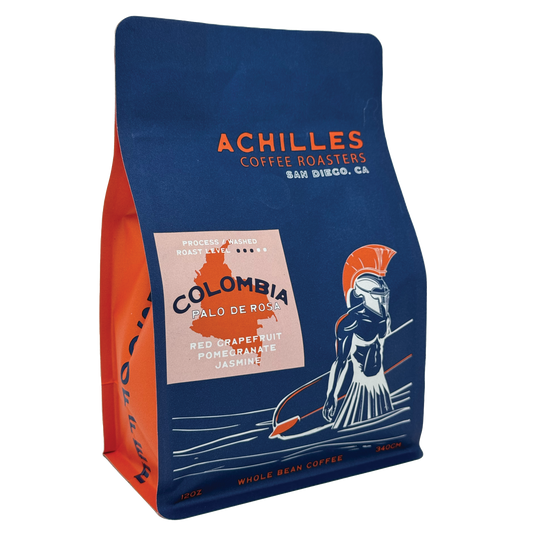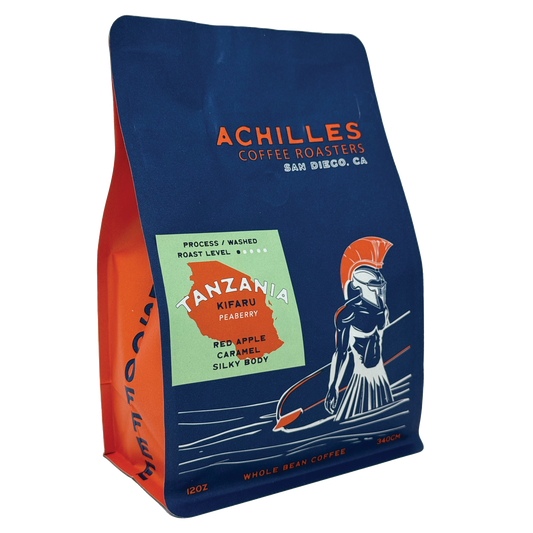“Smooth coffee” is one of the most popular yet misunderstood phrases in the coffee world. Ask five people what makes a coffee smooth, and you’ll likely get five different answers. Some describe it as low in bitterness, others think of mild acidity, and many associate it with a silky, velvety texture that glides effortlessly across the palate. Smooth coffee is the kind that’s easy to drink—balanced, gentle, and comforting—but rarely do we stop to ask why it tastes that way.
So what exactly defines a smooth cup of coffee? Is it the roast level, the bean origin, or the way it’s brewed? The truth is, smoothness comes from a delicate interaction of acidity, body, and balance—three elements that work together to create harmony in flavor and texture.
In this comprehensive guide, we’ll explore the science and sensory experience behind smooth coffee, uncovering how factors like bean density, roast development, and brewing technique influence that sought-after taste. You’ll learn how to identify smooth coffees by flavor profile, how to brew them consistently, and how to adjust variables like grind size or extraction time to perfect your cup.
Whether you’re a daily drinker seeking a low-acid, mellow cup, or a specialty coffee enthusiast chasing the perfect balanced brew, understanding what makes coffee smooth will change the way you taste and appreciate every sip.
The Meaning of “Smooth” in Coffee
In everyday conversation, calling a coffee “smooth” usually means it’s pleasant, mild, and easy to drink. A smooth coffee doesn’t attack your palate with harsh bitterness or sharp acidity. Instead, it feels gentle, rounded, and balanced, gliding across your tongue with a clean finish. You can sip it black without wincing, and it leaves no unpleasant aftertaste—just warmth and satisfaction.
However, in the world of coffee professionals and sensory experts, smoothness has a more technical meaning. It’s not about being bland or weak—it’s about harmony. Smooth coffee is the result of acidity, sweetness, and body working together in perfect proportion.
-
Acidity provides brightness and liveliness, but never crosses into sourness.
-
Body gives the coffee texture and structure—a sense of weight or silkiness that carries flavor—but it shouldn’t feel heavy or syrupy.
-
Sweetness acts as the bridge, tying acidity and body together to create a cohesive, well-rounded taste experience.
When these three elements align, the result is a coffee that feels refined, balanced, and complete. It’s smooth because no single characteristic overwhelms the others. The acidity upl
Acidity: The Spark That Needs Balance
Acidity is one of the most defining and misunderstood characteristics of coffee. It’s what gives a cup its brightness, liveliness, and sense of freshness—the vibrant spark that keeps it from tasting flat or dull. When balanced properly, acidity brings clarity and dimension to flavor, allowing fruity or floral notes to shine. But when it’s excessive or poorly extracted, it can make a coffee taste sharp, sour, or unpleasantly tangy.
What Causes Acidity in Coffee
1. Origin:
The coffee’s growing environment has a huge impact on acidity. Beans cultivated at high altitudes, such as those from Ethiopia, Kenya, or Colombia, mature more slowly, developing complex organic acids like citric, malic, and tartaric acid. These compounds contribute to the bright, citrusy, and juicy qualities often found in specialty coffees. Lower-altitude coffees, on the other hand, tend to have milder acidity and more earthy or chocolatey undertones.
2. Processing Method:
How the coffee is processed after harvest also shapes acidity. Washed coffees, which are fermented and rinsed to remove fruit pulp before drying, tend to highlight crisp, clean, and high-toned acidity—think lemon, green apple, or lime. In contrast, natural and honey-processed coffees, which dry with some or all of the fruit intact, retain more sugars and produce a rounder, sweeter acidity that feels softer and less biting.
3. Roast Level:
Roasting plays a crucial balancing role. Light roasts preserve the organic acids present in the green bean, emphasizing brightness and complexity. Medium roasts gently caramelize those acids, creating balance and sweetness. Dark roasts, roasted longer and hotter, break down many of those acidic compounds, leading to a smoother, lower-acid cup that leans more toward chocolate, spice, and roasted flavors.
Acidity in Smooth Coffee
In a smooth coffee, acidity isn’t absent—it’s refined. The goal isn’t to eliminate brightness but to ensure it enhances the coffee rather than overwhelms it. A well-balanced acidity should lift flavor and add dimension, like a touch of fruitiness that harmonizes with sweetness and body.
Imagine a medium-roast Guatemalan coffee: you might taste a subtle, crisp apple-like tartness, beautifully wrapped in layers of caramel and nutty sweetness. The acidity is there—it’s lively enough to make the coffee taste fresh—but it never crosses into sourness. That’s what smooth acidity feels like: elegant, integrated, and balanced.
When brewing, the same principle applies. Proper grind size, water temperature, and extraction time can either emphasize or tame acidity. With attention to detail, you can transform what might otherwise taste sharp into something bright, sweet, and silky, perfectly balanced in every sip.
Body: The Texture That Defines Mouthfeel
The body of coffee describes how it feels in your mouth—its weight, texture, and viscosity. It’s one of the most tangible aspects of coffee tasting, often influencing whether a brew feels light and refreshing or rich and indulgent. A light-bodied coffee tends to feel thin or tea-like, while a full-bodied coffee has a creamy, syrupy, or even velvety texture that lingers pleasantly on the palate.
When people describe coffee as smooth, they’re often responding to this textural quality—the sensation of a well-rounded, cohesive cup that glides effortlessly across the tongue.
What Influences Coffee Body
1. Brewing Method
The way you brew your coffee has a major impact on its body. Immersion brewing methods like the French press or AeroPress allow coffee grounds to remain in contact with water for a longer period, extracting more oils and fine particles that contribute to a heavier, fuller mouthfeel. In contrast, pour-over and Chemex brewing—which use paper filters—tend to produce a cleaner, lighter-bodied cup, since the filters trap many of those oils and microscopic solids.
2. Roast Level
Roast development plays a significant role in determining texture. Darker roasts create more soluble oils and caramelized compounds, resulting in a thicker, richer mouthfeel with a coating sensation on the tongue. Light roasts, by comparison, feel lighter and more delicate, emphasizing brightness over depth. Medium roasts often strike the perfect balance—silky and round, without the heaviness of darker roasts.
3. Grind Size and Extraction Time
Your grind size and extraction time also influence body. Finer grinds increase surface area and extraction potential, allowing more oils and solids to dissolve into the brew. Longer extraction times—especially in espresso or French press brewing—enhance this effect, resulting in a denser, more tactile cup. Coarser grinds and shorter brews, on the other hand, yield a thinner texture that feels cleaner but less rich.
Body in Smooth Coffee
A smooth coffee doesn’t necessarily have the heaviest body—it has a balanced texture that feels silky, round, and cohesive. The ideal smooth coffee coats the palate gently without feeling greasy, oily, or gritty. It’s the kind of mouthfeel that encourages you to take another sip, offering structure without harshness.
For example, a medium roast Colombian or Brazilian coffee brewed via French press often achieves this sweet spot—rich and creamy enough to feel indulgent, yet clean enough to remain refreshing. Espresso, too, is renowned for its luxurious texture; its pressure-based extraction produces a concentrated, velvety body crowned with a smooth crema.
Ultimately, body is the tactile foundation of smoothness. When combined with balanced acidity and natural sweetness, it creates a coffee experience that feels polished, comforting, and deeply satisfying—the hallmark of what we describe as a truly smooth cup.
Balance: The Harmony Between Flavor Components
The Importance of Balance in Creating Smooth Coffee
If acidity brings liveliness and body adds texture, then balance is what holds it all together. Balance is where acidity, sweetness, body, and bitterness meet in perfect proportion. A well-balanced coffee doesn’t shout any one flavor; instead, it delivers a cohesive, harmonious experience where every sip feels complete.
In coffee terms, balance means that no single element overwhelms the others. It’s not too sharp, too sweet, too bitter, or too flat. Instead, each component—acidity for brightness, sweetness for depth, body for structure, and bitterness for contrast—exists in synergy. When these forces are aligned, the result is that coveted smoothness coffee drinkers love.
Signs of a Balanced (and Smooth) Coffee
You can often recognize a balanced coffee by how it develops on your palate from the first sip to the finish:
-
Flavor progression: The coffee has a clear beginning, middle, and end. You might first notice brightness, then sweetness, followed by a satisfying, gentle finish.
-
Integrated sweetness: The natural sugars in the bean bridge acidity and bitterness, creating a smooth transition between flavors.
-
Pleasant aftertaste: A balanced coffee lingers softly, leaving behind warmth and satisfaction rather than harsh or astringent notes.
-
No dominant characteristic: No single element stands out in an unpleasant way; the coffee feels unified and easy to drink.
This balance is why some coffees are described as “approachable” or “drinkable”—they deliver complexity without being challenging or fatiguing to the palate.
How Balance Is Achieved
Balance doesn’t happen by accident—it’s the result of precision and craftsmanship. Roasters and baristas spend countless hours fine-tuning variables to ensure harmony in every cup:
-
Roast development: Skilled roasters adjust roast curves to control caramelization and acidity. A few seconds too long or too short can tip the balance from bright and sweet to flat or bitter.
-
Blend creation: Many roasters craft blends to achieve balance, combining beans with complementary characteristics—like a fruity Ethiopian for acidity and a rich Brazilian for sweetness and body.
-
Brew ratios and water chemistry: Baristas refine brew ratios, grind size, temperature, and water quality to ensure even extraction. Over-extraction increases bitterness; under-extraction exaggerates acidity. Perfect balance lies in the middle ground.
Finding Balance at Home
You don’t need professional equipment to experience balance in your coffee—you just need awareness and a willingness to adjust.
-
Start with the right beans: Choose medium-roast coffees or balanced blends known for harmony between acidity and sweetness.
-
Dial in your grind and ratio: If your coffee tastes sour, grind finer or brew longer. If it tastes bitter, grind coarser or shorten extraction.
-
Mind your water: Filtered water at the right temperature (195–205°F) helps achieve consistent results.
-
Experiment with brew methods: A French press will enhance body, while a pour-over will highlight clarity—find the combination that creates balance for your taste.
When you achieve true balance, every element in your coffee supports the others. The result is a smooth, well-rounded cup that’s vibrant yet comforting—lively enough to keep you engaged, but gentle enough to savor sip after sip.
Which Coffees Are Considered “Smooth”?
Certain origins, roast levels, and blends naturally lend themselves to smooth profiles:
1. Medium Roasts
Medium roasts strike the perfect middle ground—retaining some acidity from lighter roasts while developing caramelized sugars for sweetness. These roasts are the go-to for smoothness, offering balanced flavor, medium body, and mild acidity.
2. Brazilian and Colombian Coffees
Coffees from Brazil and Colombia are famous for their smooth, nutty, chocolatey profiles. They feature medium acidity and rich sweetness, making them ideal for espresso or drip brewing.
3. Blends Designed for Balance
Many espresso and breakfast blends combine beans from multiple regions to create consistent smoothness. A typical blend might pair a bright Central American coffee with a full-bodied South American base for a mellow, rounded experience.
4. Washed Central American Coffees
Coffees from Guatemala, Costa Rica, or Honduras often exhibit clean, structured balance, making them excellent choices for those who appreciate smooth, refined cups.
Brewing for Smoothness
Even the best specialty coffee beans can taste harsh, bitter, or flat if brewed incorrectly. Brewing is the final—and arguably most important—stage in determining how smooth your coffee feels. The way you grind, heat your water, and balance your ratios has a direct impact on whether your cup turns out silky and balanced or sharp and over-extracted.
Brewing coffee is a combination of chemistry and precision. Each variable—grind size, water temperature, brew time, and ratio—affects extraction, or how soluble compounds are drawn from the grounds. Too much extraction brings out bitterness; too little leaves the coffee sour and underdeveloped. Finding the sweet spot is the secret to smoothness.
Pro Tips for Brewing a Smooth Cup of Coffee
1. Use the Right Grind Size
Grind consistency is crucial for even extraction. If your grind is too fine, water moves through too slowly, dissolving excess bitter compounds and producing an astringent taste. If it’s too coarse, water flows too quickly, under-extracting the coffee and leaving it weak or sour.
-
For espresso, use a very fine grind.
-
For pour-over or drip, aim for medium to medium-fine.
-
For French press or cold brew, choose a coarse grind.
Start with your brewing method’s ideal range, then make small adjustments based on taste.
2. Mind the Water Temperature
Water that’s too hot can scorch the coffee, creating bitterness. Too cool, and it won’t extract enough sweetness or depth. The optimal range is 195–205°F (90–96°C). This temperature ensures even extraction, allowing acidity, sweetness, and body to balance naturally. Using a gooseneck kettle with temperature control can help you stay precise.
3. Use Filtered Water
Water makes up more than 98% of your brew, so its quality matters. Hard water or water with excessive chlorine or mineral imbalance can distort flavor and flatten brightness. Filtered or spring water preserves the coffee’s natural sweetness and ensures a smoother, cleaner cup.
4. Avoid Stale Coffee
No amount of perfect technique can fix stale beans. Coffee’s flavor peaks within 3–4 weeks of its roast date, after which the aromatic oils oxidize and degrade. Always buy whole-bean coffee, store it in an airtight, light-proof container, and grind only before brewing. Exposure to air, light, and humidity is the enemy of smoothness.
5. Experiment With Brew Ratios
Your coffee-to-water ratio affects balance and mouthfeel. A stronger ratio (more coffee per water) brings out sweetness, depth, and body, while a weaker ratio can feel thin and sharp.
-
A common starting point: 1:16 (1 gram of coffee per 16 grams of water).
-
For espresso, try 1:2.
-
For immersion brews like French press, 1:14 or 1:15 can yield a creamier mouthfeel.
Experiment and adjust to your taste preference—subtle tweaks can transform a cup from edgy to effortlessly smooth.
Bonus Tip: Control Contact Time
The longer coffee and water interact, the more soluble compounds are extracted. Immersion methods like French press benefit from 3–5 minutes of steeping, while pour-over should maintain steady flow for 2.5–4 minutes. Espresso’s 25-30-second extraction produces intensity with smooth texture when dialed in properly.
By mastering these brewing fundamentals, you can take any coffee—light, medium, or dark roast—and make it taste its best. Smoothness is not about eliminating acidity or complexity; it’s about achieving harmony through precision. With the right grind, water, and timing, every cup can feel balanced, velvety, and deeply satisfying.
The Role of Milk and Additives
Adding milk or cream can make coffee taste smoother by softening acidity and bitterness. The fats in milk coat your tongue, creating a silkier mouthfeel and mellowing sharper notes. This is why darker roasts often taste exceptionally smooth in milk-based drinks like lattes and cappuccinos.
However, true coffee smoothness doesn’t depend on additives—it begins with high-quality beans, balanced roasting, and thoughtful brewing.
Common Misconceptions About Smooth Coffee
1. “Smooth Coffee Has No Acidity.”
False. Smooth coffee has acidity—it’s just balanced rather than harsh.
2. “Only Dark Roasts Are Smooth.”
Not true. Dark roasts can taste smoky and bitter if overdone. Many medium and even light roasts can be incredibly smooth when brewed properly.
3. “Smooth Coffee Is Flavorless.”
The opposite is true. Smooth coffee is flavorful yet harmonious, allowing you to appreciate nuanced notes without sharpness.
Final Thoughts: The Art of Smoothness
Smooth coffee is all about balance, craftsmanship, and care—from the farm to the roaster to your cup. It’s not a matter of roast darkness alone, but of how acidity, body, and sweetness work together to create a seamless flavor experience.
When you sip a smooth coffee, you’re tasting the result of precision and harmony: the right beans, the right roast, and the right brewing technique.
So, next time you brew, take a moment to consider what “smooth” means to you. Whether it’s a silky medium roast from Colombia or a soft, chocolaty espresso blend, understanding the elements of smoothness will help you appreciate every nuance—and craft your perfect cup with confidence.








